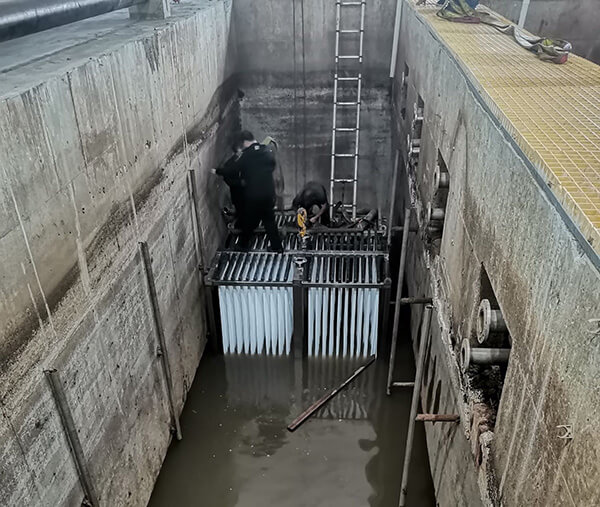What is the treatment process for electroplating wastewater?
Because electroplating wastewater contains large amounts of heavy metal ions and organic pollutants, it requires a systematic treatment process to meet discharge standards. The overall process involves multiple steps, and the specific steps can be flexibly adjusted based on the wastewater properties, treatment objectives, and facility conditions. The following is an overview of common electroplating wastewater treatment processes:
I. Preliminary Pretreatment Stage
Screed Interception
Screeds remove large suspended solids and floating impurities, effectively reducing the load on subsequent systems.
Regulating Tank Conditioning
Wastewater enters the regulating tank, achieving balanced water quantity and quality, providing continuous and stable water inlet conditions for subsequent treatment processes.
II. Core Treatment Steps
pH Adjustment and Neutralization
Electroplating wastewater often tends to be acidic or alkaline. The pH needs to be adjusted to a neutral range by adding an acid or base (such as sodium hydroxide or sulfuric acid) to create a suitable reaction environment.
Coagulation and Sedimentation Treatment
Adding a coagulant (such as PAC, PAM, etc.) to promote the formation of larger flocs of colloids and fine suspended matter, facilitating sedimentation and removal, is a key step in physical and chemical methods.

Electrolytic Removal of Heavy Metals
An electrolytic device causes metal ions to undergo reduction or precipitation reactions on the electrode surface, forming insoluble precipitates, thereby removing heavy metals.
Activated Carbon Adsorption Process
Utilizing the high specific surface area and strong adsorption properties of activated carbon, it effectively removes residual organic pollutants and some heavy metals from wastewater, improving water quality.
Fine Separation Using Membrane Technology
Depending on the treatment objectives, membrane separation processes such as ultrafiltration, reverse osmosis, or nanofiltration can be used to deeply purify dissolved substances and trace metal ions.
III. Deep Purification Treatment
Advanced Oxidation Treatment
For refractory organic pollutants and residual heavy metals, technologies such as ozone oxidation and Fenton’s reagent can be used. These strong oxidation processes break down the molecular structure of organic matter, enhance biodegradability, and reduce metal toxicity.
Ion Exchange Process
To achieve resource recovery of heavy metals, ion exchange resins can be introduced to effectively remove and recover metal ions from wastewater through ion exchange.
IV. End-of-pipe Treatment Stage
pH Adjustment
Before discharge, the wastewater’s pH is adjusted to ensure that the final effluent meets national or local discharge standards.
Sterilization and Disinfection
To prevent pathogenic microorganisms from spreading and contaminating the environment through the discharged water, disinfection methods such as chlorine disinfection, chlorine dioxide treatment, or ultraviolet sterilization are often used.
V. Compliant Discharge or Resource Reuse
After the above multi-step treatment process, the electroplating wastewater’s quality generally meets environmental discharge standards. Depending on the factory’s needs, the treated water can be directly discharged into natural water bodies or further treated and reused for production processes, flushing, or other non-potable applications.
Conclusion
The electroplating wastewater treatment process integrates physical, chemical, and biological technologies. Process units must be scientifically configured according to specific water quality conditions and environmental requirements to achieve efficient purification, stable operation, and resource recovery.
